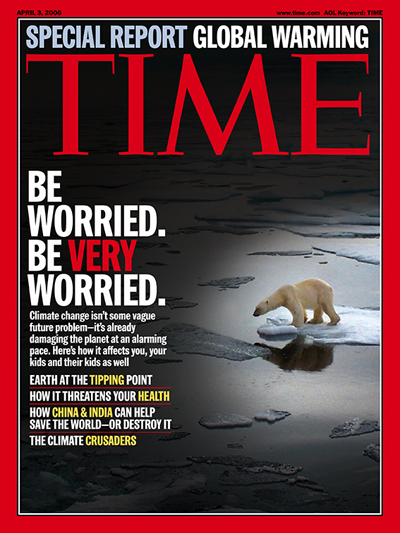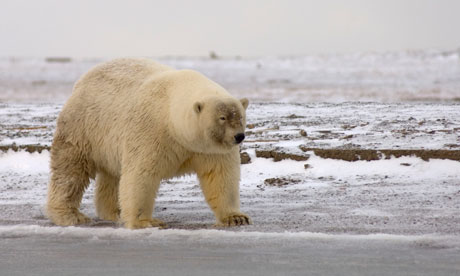By Kate Holland
An image often associated with the melting of the Arctic ice cap, is that of a polar bear standing on thin ice, exemplified in Figure 1.

From: Time
The melting of sea ice is forcing polar bears to spend more time inland. Venturing far from their normal habitat they are interacting and interbreeding with grizzly bears, resulting in grolar bears, pizzly bears or more fancifully known as polizzly bears (pictured in Figure 2).
Technically, the naming of hybrids should depend on the sex of the parents, where the father provides the first half of the species name and the mother provides the latter half. For example, a pizzly bear has a polar bear father and a mama grizzly. But I can imagine it would be far more difficult to determine the paternity/maternity of a hybrid species outside a zoo.

From: The Guardian
The first wild grolar was encountered back in 2006, as a hunting prize. The hunter was able to avoid jail time –-and a fine – when DNA testing by Wildlife Genetics International in British Columbia confirmed the beast was a hybrid of a polar and grizzly bear (the hunters $45,000 permit was only for bagging polar bears). Since then a number of these hybrid bears have been sighted in northern Canada.
Some might argue that interbreeding is a good solution for polar bears faced with climate change. While hybridization is not necessarily a bad thing, it’s the short time periods over which it occurs, that causes a significant drop in genetic diversity. This is damaging to both species and will more quickly push them to extinction.
Interbreeding could also be a potential risk for survival, as obviously, each bear has evolved to live in quite different ecosystems. The grizzly bear is not designed for long swims, but what if a pizzly still has a taste for seals?
Then there is the rest of the ecosystem to worry about – how does the grizzly bear ecosystem deal with a grolar bear? Will it hunt all year round or hibernate? Will the grolar bear be a super predator in its habitat and cause extinctions down the food web? Such an interesting animal could also become the target of hunting (or worse – cheesy horror movies [Polizzlynado anyone?]) as it is not yet protected by conservation laws. In order to protect both, the polar bears and the ecosystems, some out-there ‘conservationists’, have suggested moving the bears to the Antarctic.
Turn back the bears!
Perhaps such issues for many species, both old and new, wouldn’t be such a problem if WE reduced our impacts on the environment – but that’s a discussion for another day.

May 21, 2014 at 10:10
Moving them to Antarctica … guess that will have no effect on the ecosystem there 😉
May 21, 2014 at 10:19
The penguins may say otherwise in Antractica
May 21, 2014 at 10:36
what could possibly go wrong ?!
May 21, 2014 at 11:30
Now in your cinema: Penguins vs Polar Bears!
Come on a journey to Antarctica. A world, where House Polar Bear (“Summer is coming”) is in an epic struggle against House Penguin (“Hear me Fiep”). While their whole world is being in constant threat from the mysterious “Humans” from North of the Great Circumpolar Current. A danger that threatens to kill them all …